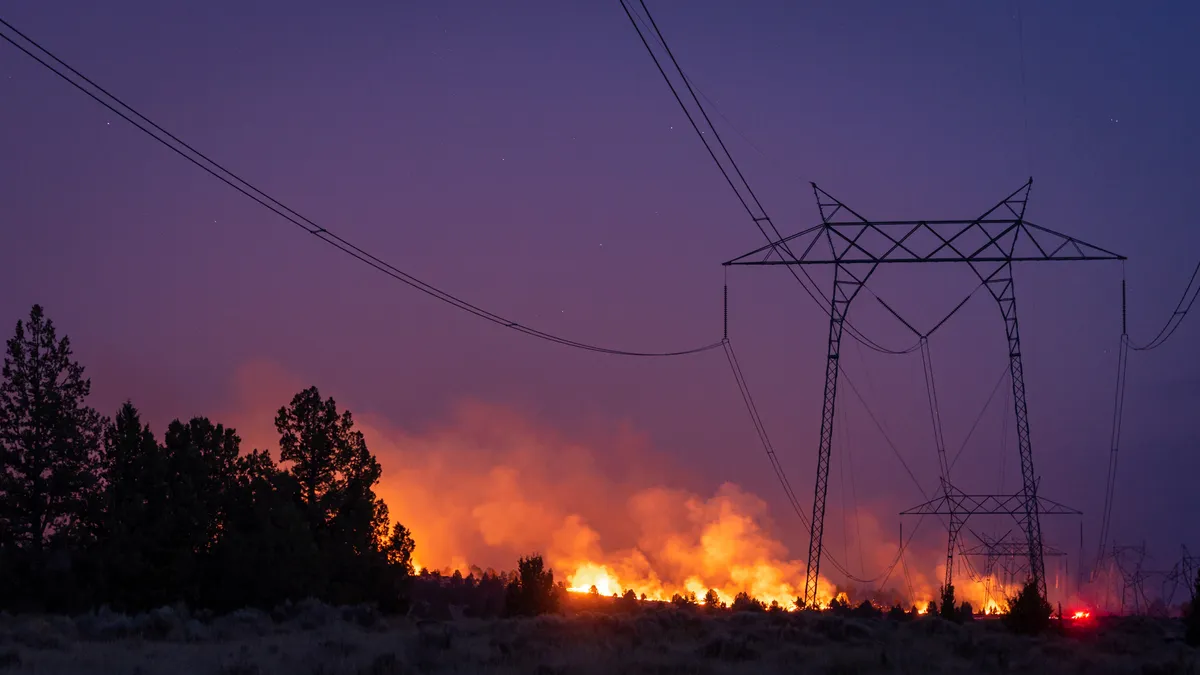Research funding for emerging energy projects could be on the chopping block if President Trump follows through on a proposed budget gutting spending from federal agencies.
At stake is funding for the Advanced Research Project Agency-Energy, more commonly known as ARPA-E. Created in 2007 as a technology incubator under the purview of the Department of Energy, ARPA-E’s mission is to drive innovation in energy technologies too risky or innovative for the private sector.
Throughout the Obama administration, ARPA-E thrived. Since 2009, the agency has provided more than $1.5 billion in funds for more than 500 projects, which have attracted $1.8 billion in private sector funding.
Last year at ARPA-E's annual summit, government officials and cleantech companies lauded the agency's progress, proclaiming 2016 to be "the best of times for innovation in energy."
That, however, was before reality TV star Donald Trump emerged as a serious presidential contender, running on a platform that pledged to shrink the federal government and roll back its climate programs.
Now that he is in the White House, federal agencies like the Department of Energy are on guard, working to save longstanding programs from deep cuts or elimination.
In January, a leaked budget proposal from the White House targeted DOE for massive spending reductions, including the elimination of divisions focused on electricity, efficiency and renewables, and fossil fuel research.
For ARPA-E and other DOE offices, it's now a fight to prove their worth to the Trump administration. Eric Rohlfng, the acting director of ARPA-E, hopes to convince Congress and the White House to keep the agency afloat.
“It’s too early to speculate what happens at ARPA-E at this point ... a transition is a complicated process,” Rohlfing told Utility Dive at the agency’s 2017 annual summit in National Harbor, MD. “What we’re doing with the transition team in the department right now is explaining how we work, what we do, the projects we do, the success that we had and basically we’re saying we’re an effective agency.”
Other speakers at the summit spoke forcefully about the need for federal funding for energy projects. While differences emerged over the exact role of federal investments, lawmakers and researchers largely agreed that government money is essential in getting risky energy projects commercialized.
“It’s about making the connection that support for basic science or applied science is not a luxury we can afford when we’re rich,” said Rafael Reif, President of the Massachusetts Institute of Technology. “It’s an investment in our future. If we stop supporting basic science, it will stop innovation.”
R&D funding under scrutiny
ARPA-E was a bipartisan initiative modeled on the Department of Defense’s Department of Advanced Research Agency. Instead of military projects, ARPA-E would target the electric power sector, particularly projects that presented too long a payback period to be appealing to private investors.
While the agency enjoyed broad support throughout the Obama administration, many expect it to come under new scrutiny from the Trump administration and congressional Republicans.
“[Federal] investment in research is a paradox,” Sen. Cory Gardner (R-CO) told the audience at the summit. “Our federal dollars are precariously placed on the cusp of failure, but also on the cusp on unimaginable success."
Many GOP lawmakers would prefer to see the private sector fund projects, but Gardner said “there are instances in which the private sector alone doesn’t make economic sense."
"Despite funding a significant portion [for R&D], the private sector spends [more] money on the development side.”
Using federal dollars would ensure an innovative concepts would prosper and move toward a working reality, he added.
The task for clean energy supporters now is how to persuade a more skeptical members of Congress, as well as the administration, that federal monies should be put toward projects that will likely not pay off until decades down the road. Rep. Mark Takano (D-CA) and Sen. Gardner agreed that leveraging economic and national security arguments could be a winning strategy.
“Climate change may not be the all embracing motivation for Congress to move forward in energy research but oddly enough we may justify it under national defense,” Takano said.
Business as usual, for now
Trump’s proposed budget rolled out this week would slash roughly 25% from the EPA, but it’s yet unknown how deep the cuts will be at the DOE.
Former Texas Gov. Rick Perry (R) reassured lawmakers during his confirmation hearings in January that he would protect research funding, even if it was housed under different offices after agency reorganization.
“I will be an advocate. I will be in the room advocating for these types of things," Perry told the assembled Senators at the time. "I'm not going to tell you I'll be there 100% successful in that, but I can assure you and the people who know me ... know my commitment to making sound science, economic science, connected together."
Despite the uncertainty surrounding the future of ARPA-E — and the projects hoping to secure funding — it’s business as usual for Rohlfing. ARPA-E is preparing to open solicitations for this year and in 2018.
“It’s premature to say we’re doing anything differently,” Rohlfing said.
Attendees standing in their booths and displays at the Summit were reluctant to comment about the impact of Trump’s budget cuts on the agency that moved their idea closer to reality. But their projects are the lucky ones — they already have the money in hand to continue persevering in the highly competitive space. It’s the entrepreneurs and researchers searching for funding next year that will be hit hard by any budget constraints.






















